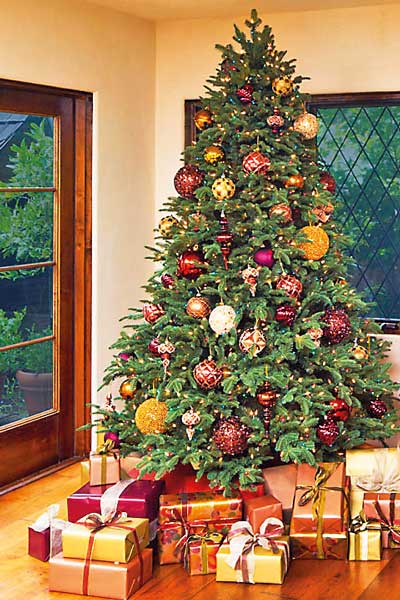Reply To:
Name - Reply Comment

The fact that Christmas celebrations had started during the time of Romans as a holiday festivel is a generally accepted view. It was developed with dedication to Jesus Christ. Some thinkers take it for granted that Christmas is a religious festival to commemorate the birth of Jesus Christ. However, some others do not accept the view that Jesus Christ  was born on December 25 and argue that his birth had been taken place on another day. Yet the accepted view today is that Jesus Christ was born at a modest and a humble place – a stable in Bethlehem -on the twenty fifth day of December, two thousand and eighteen years ago.
was born on December 25 and argue that his birth had been taken place on another day. Yet the accepted view today is that Jesus Christ was born at a modest and a humble place – a stable in Bethlehem -on the twenty fifth day of December, two thousand and eighteen years ago.
It was a place of shepherds but the angels who knew that it was the liberator of the humankind that was born conveyed the message first to a group of shepherds who were looking after sheep in a meadow at night on a cold winter day. It is believed that this extraordinary person, the only son of god, Jesus Christ who had come to this world to liberate the humankind from the sufferings of sin.
With the birth of Jesus Christ mankind got many other things to share among them. Jesus Christ brought with him good qualities such as virtuousness, compassion, kindness, patience or patient endurance and forgiveness. God has sent these qualities to this world with immeasurable and unlimited compassion towards human beings. The fact that Jesus Christ was born in Bethlehem is substantiated by a statement in the Bible.
Christmas, which is celebrated mainly by Christians as their most important religious festival is incidentally the ceremony celebrated by the most number of people in the world. In Sri Lanka we call this festival “Nattala”in Sinhala. This is the term derived from the Portuguese word “Natal” meaning birth - birth of Jesus Christ.
Since Jesus Christ is believed to have been born in a stable, the sheep, stable and the manger occupy a prominent place in Christmas celebrations. Members of the family get together to make the model of a manger in the main hall of the house with the baby in a straw bed. Maria, Joseph, kings and sheep stand on either side of angles looking from above.
Many villagers get together under the admonition of the priest to make the manger in the village church. Hence, manger is not only a symbol to commemorate the birth of Jesus Christ but also a means of creating a sense of togetherness among the members of the family and among the members of the external society.
 Christmas tree
Christmas treeAnother tradition followed during the Christmas season is to erect a Christmas trees in churches and houses. Unlike the miniature of the manger the Christmas tree is not a symbol to commemorate the birth of Jesus Christ. Instead it is a symbol of bringing to our minds the cold and chilly winter season in European countries. In these countries the winter with unbearable cold commences in December.
There are certain kinds of trees such as Oak, Fern and Cyprus with evergreen leaves. Before the spread of Christianity in Europe it was customary for the people in countries like Germany, Sweden and Denmark to hang on the roof or to keep in the house a branch of an evergreen tree. On the one hand they did it to bring prosperity to their houses. On the other hand it was a means of indicating the vitality of the nature. In Germany the Christmas tree had been an ancient custom of symbolizing the natural phenomena and later on this practice was followed in other countries.
A Christmas tree is a decorated tree. The tree was traditionally decorated with edibles such as apples, nuts or fruits. In the 18th century devotees began to decorate the Christmas trees with candles which was later replaced by Christmas lights with the advent of electricity. Today there are wide varieties of traditional ornaments such as garlands, tinsel and candy canes. An angel or a star should be placed at the top of the Christmas tree to represent the angel Gabriel or the star of Bethlehem from the Nativity.
At present it is customary to decorate the Christmas tree with electric bulbs, laces, balloons etc. Illumination is a means of indicating that the Christmas tree brings effulgence of Jesus Christ in the house or in the church. Presents are hung on the Christmas tree as a mark of rejoicing. Sharing and distributing.
Since Jesus Christ is believed to have been born in a stable, the sheep, stable and the manger occupy a prominent place in Christmas celebrations. Members of the family get together to make the model of a manger in the main hall of the house with the baby in a straw bed.
According to the Encyclopedia Britannica the use of evergreen trees, wreaths and garlands to symbolize the eternal life was the custom of ancient Egyptians, Chinese and Hebrews. Tree worship was common among the Pagan Europeans which survived even after their conversion to Christianity. In the Scandinavian custom of decorating the house and the barn with evergreens at the New Year is to scare away the devil and setting up a tree for the birds during Christmas time. Presents are hung on the Christmas tree as a mark of rejoicing, donating, sharing and distributing.
 Santa Claus
Santa ClausSanta Claus is a very important figure during the Christmas season. He is presented in almost all the shops and at the places where Christmas is celebrated. The concept of Santa Claus comes in the eve of Christmas with Christmas gifts, especially to houses where there are children to commemorate father St. Nicholas who was the bishop of Mira in Turkey during the fourth century A.D. It is said that this father was fond of children and had helped the poor and the needy. He was endowed with wealth and property by his parents. He had used this property to help the poor and the needy, especially the children. This made them to believe that he was the saint of children. They paid him reverence. Lately parents began to offer presents to their children in the name of St. Nicholas.
Many Legends and miracles are attributed to him. It is said in the legends that he had to fast five days a week during his infancy because his mother nursed him only on Wednesdays and Fridays. However, his father had left him a fortune which he had used to help the poor. It is said that he adorned the children during his lifetime and threw gifts anonymously through the windows of their houses. Even today sailors adorn him because he had halted storm at sea in order to save the lives of three drowning sailors. He had brought back to life several children who had been killed. He is said to have performed several miraculous acts to be of service to others irrespective of their rank and status. He had grabbed the sward of an executioner to save the life of a political prisoner. St. Nicholas also adopted some qualities of the “Grandmother” or Bartana from Italy. She was said to have filled the stockings of children with gifts. Her shrine at Bari had also converted to a shrine of St. Nicholas.
Christmas cards serve the purpose of sharing the pleasure connected with Christmas with friends, relatives and well wishers who live away. The tradition of sending Christmas cards came into being as a result of the felt need to share the pleasure connected with Christmas with those who live away including those who live abroad. Today there are other means such as the face book to serve this purpose.
Devotees go to the church on the Christmas day and attend to the services performed by priests. They also perform Christmas rites at home and commemorate the birth of Jesus Christ. Christmas hymns or carols are sung at Christmas to express the feelings of devotion an d to eulogize Jesus Christ as a hero. Songs are mainly about the birth of Jesus Christ and the manner in which the incident of the birth of Jesus Christ was conveyed to the shepherds by the angles.
Packed with busy shoppers, bells, colourful lights and Santa Claus Christmas time is thought to be the most wonderful season of the year by many people. Winter with snowy mountains, Christmas trees, decorations, Christmas cards with greetings for prosperity in addition to religious sentiments are very important aspects which make us to take it for granted that this is the most beautiful, happy and blissful day of the year.